13
Dicembre
ore 12.00
Sala di Consiglio |
Rosalia Santoleri
Ocean dynamics from space
The oceans provide essential services to our society, by regulating the
climate, providing food and energy, ruling many of our economic
activities. However, the marine ecosystem is more than ever impacted
both by climate change and other human-induced pressures. As
consequence there is a growing need to continuously monitor the oceans
and to predict the marine weather and climate evolution.
Numerical modelling for marine and climate forecasting, time series
analysis and algorithms to retrieve ocean geophysical parameter from
space observation have been developed to answer these challenges.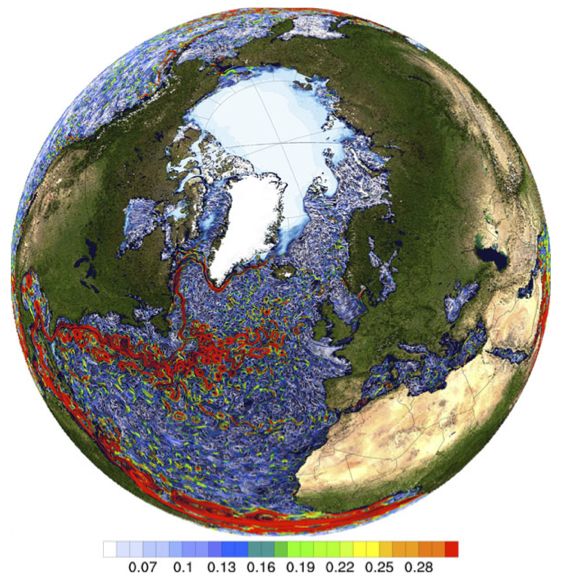
Ocean currents are the
most significant parameters for our study, significantly impacting the
air-sea interaction, pollution and transport of ocean trace. We propose
a global estimation of surface ocean currents from space by developing
physical models and algorithm at the best spatial a temporal
resolution. This is achieved by the inversion of the ocean heat
conservation equation in upper ocean mixed layers applied to sea
surface temperature satellite observation ad sea level altimeter
measurements. The study evidenced that our synergistic approach can
improve the present-day derivation of the surface currents up to 30%
locally, allowing retrieval of both small scales and geostrophic
features. In addition, by using Finite-Scale Lyapunov Exponents, the
surface current fields produced have also been used for a rigorous,
quantitative evaluation of satellite-based Lagrangian dispersion
numerical trajectories.
|
3
Maggio
ore 12.00-14.00
Sala di Consiglio |
Sergio
Barbarossa
Topological Signal Processing
Signals are used in our
everyday life to send and receive information or to extract information
from an unknown environment. Typically, signals are defined over a
metric space, i.e. time and space. The goal of this talk is to present
a set of tools to analyze signals that are defined over a topological
(e.g., not necessarily metric) space, i.e. a set of points along with a
set of neighbourhood relations for each point. 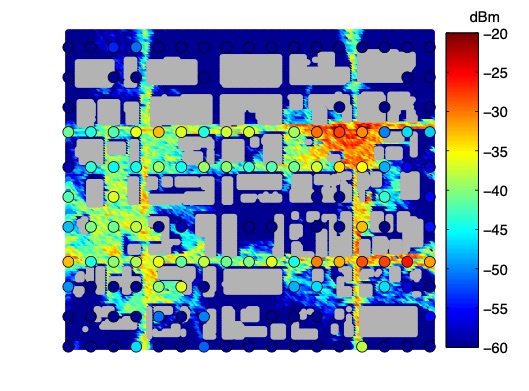 Motivating
applications span from gene regulatory networks to social networks,
etc. We introduce the Graph Fourier Transform (GFT), derive an
uncertainty principle for signals defined over graphs and set the basis
for a sampling theory over graphs. We start from signals defined over
graphs and then we move to the most general case of signals defined
over simplicial complexes. Finally, we illustrate some applications to
the recovery of the electromagnetic field from a subset of
observations, the inference of the brain functional activity network
from electrocorticography (ECoG) signals collected in an epilepsy study
and theprediction of data traffic over telecommunication networks. |
5
Aprile
ore 12.00-14.00
Sala di Consiglio |
Anton Bovier
Stochastic individual based models: from scaling
limits to modelling of cancer therapies
Stochastic individual
base models, that is, measure valued Markov processes describing the
evolution of interacting biological populations, have proven over the
last years to be effective models in deriving key features of the
theory of adaptive dynamics, such as the canonical equation of adaptive
dynamics,  the
trait substitution sequence and the polymorphic evolution sequence. In
this talk I review these models an the diverse emerging scaling limits,
and I report on recent progress in applying such models to the
modelling of cancer therapies, and in particular to immunotherapy and
combination therapies of melanoma, based on experimental data by
colleagues from the Bonn university hospital. 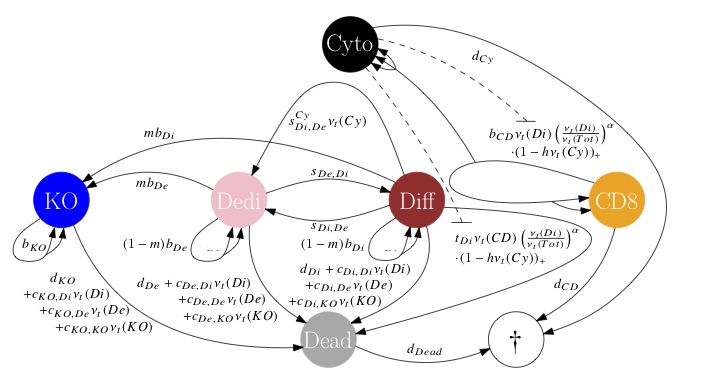 |
8
Marzo
ore 12.00-14.00
Sala di Consiglio |
Antonio De Simone
Flagellar swimming and amoeboid motion in Euglena
gracilis: the how and why of a behavioral change in a unicellular
organism
Euglena gracilis is a
unicellular protist exhibiting different motility strategies: swimming
by flagellar propulsion, or crawling thanks to large amplitude shape
changes of the whole body (a behavior known as amoeboid motion, or
metaboly).
Swimming is propelled by the non-planar beating of a composite
flagellum powered by an axoneme, with molecular motors sliding over
microtubule bundles (arranged according to the “standard” 9+2
architecture).
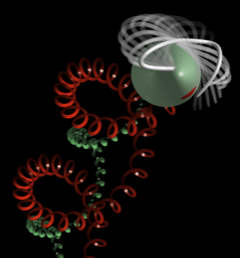 The non-planar
beating of the flagellum leads in turn to helical trajectories coupled
with body rotations, and these rotations play an important role in the
phototactic behavior of E. gracilis.
Confinement triggers a behavioral change, namely, E. gracilis switches
from flagellar swimming to ameboid motion, which is propelled by
peristaltic waves along the body of the organism. These are powered by
molecular motors driving the relative sliding of pellicle strips lying
underneath the plasma membrane. The mechanisms controlling the gait
switch in this unicellular organism are still unknown.
Our most recent findings on the motility of E. gracilis, which are the
result of a combined theoretical and experimental analysis, will be
surveyed.
Image: flagellar shapes and resulting trajectories
of the cell body (green) and eyespot (red) of Euglena gracilis
|
22
Febbraio
ore 12.00-14.00
Sala di Consiglio |
Karl Sigmund
Social learning leads to the recurrence of
corruption
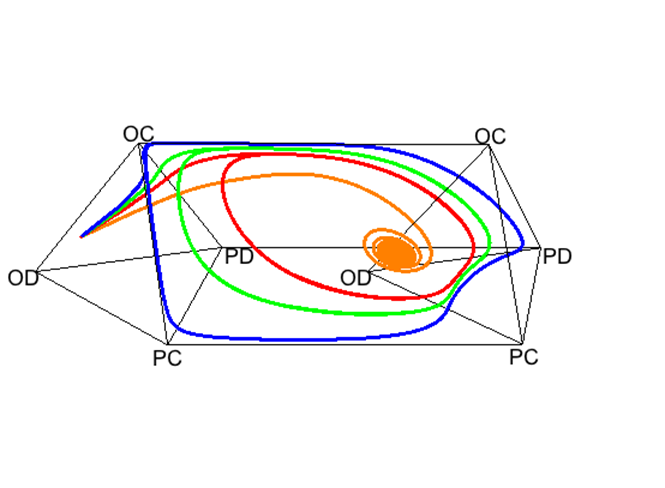
Cooperation can be
sustained by institutions that punish free-riders. Such institutions,
however, tend to be subverted by corruption if they are not closely
watched. Monitoring can uphold a regime of honesty and cooperation, but
usually comes at a price. The temptation to skip monitoring regularly
leads to outbreaks of corruption and the breakdown of cooperation. We
model the corresponding cycle by means of evolutionary game theory,
using analytical methods and numerical simulations. The results confirm
the view that transparency is a major factor in fighting corruption.
|
18
Gennaio
ore 12.00-14.00
Sala di Consiglio |
Andrea
Puglisi
Granular Brownian Motion
Granular materials are
made of macroscopic particles, called grains: sand, rice, sugar and
powders are typical examples. They are important in our everyday life,
in many industrial applications and in the prevention of geophysical
hazards. 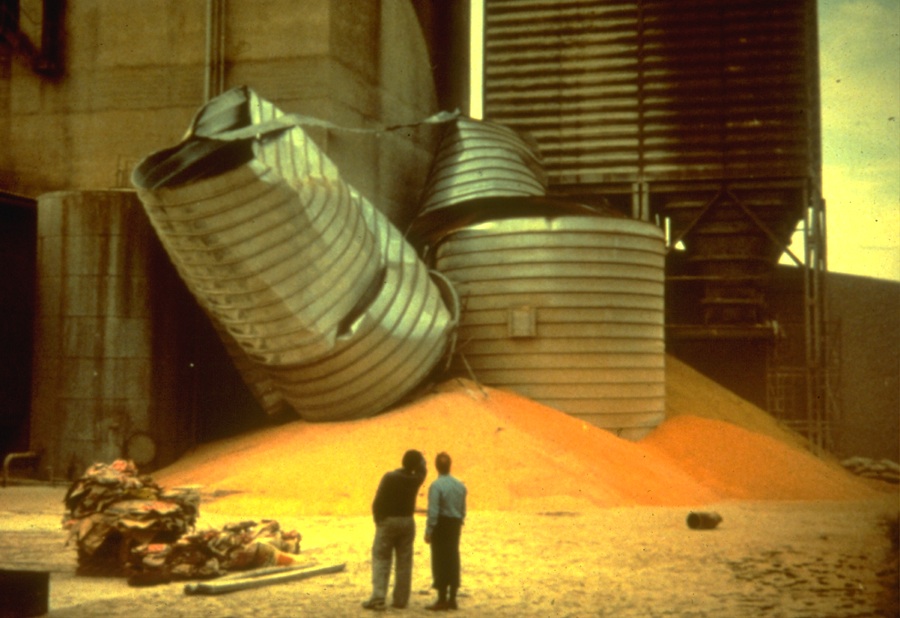 In physics,
mainly in the realm of non-equilibrium statistical mechanics, granular
systems are an inspiring source of phenomena and questions. The
simplest model of granular material is a "fluid" made of inelastic hard
spheres. For such a system - in the dilute limit - the classical
program of kinetic theory (Boltzmann equation, Chapman-Enskog-based
hydrodynamics, and much more) has been developed by physicists and
mathematicians in the last decades. In this seminar, after recalling a
few key results of such a theoretical activity, I will focus on a
series of experiments made in my laboratory in the last 5 years. They
concern the statistical properties of a massive probe immersed in a
steady state granular fluid. The fluid is obtained by
vibro-fluidization of a large number of hard spheres of different
materials, while the probe is a rigid rotator whose angular
displacement and angular velocity are the key observables. In the
dilute limit one conjectures a Markovian approximation for the
rotator's dynamics which explains many aspects of the experiment,
including a qualitative understanding of "motor effects" in the
presence of rotator's asymmetries. Further noticeable facts appear when
the granular fluid is not dilute, mainly the violation of the
mobility-diffusivity Einstein relation, and anomalous diffusion. For
these phenomena a predictive theory is lacking and only
phenomenological models are available. |
|